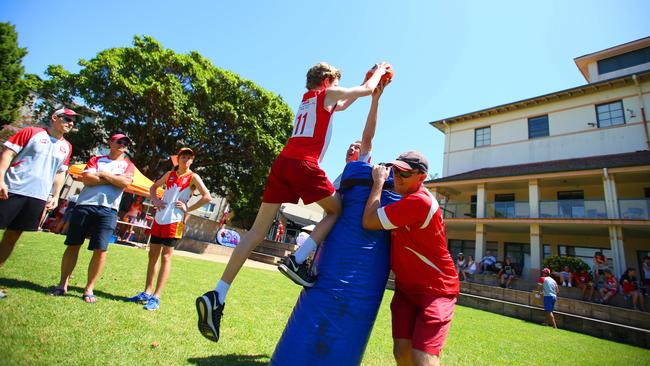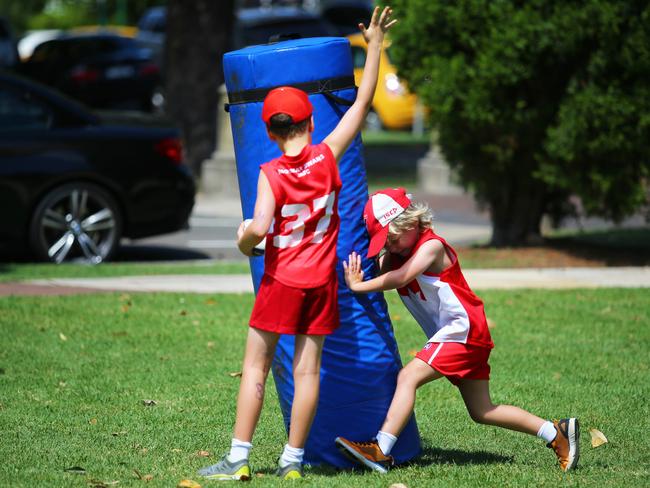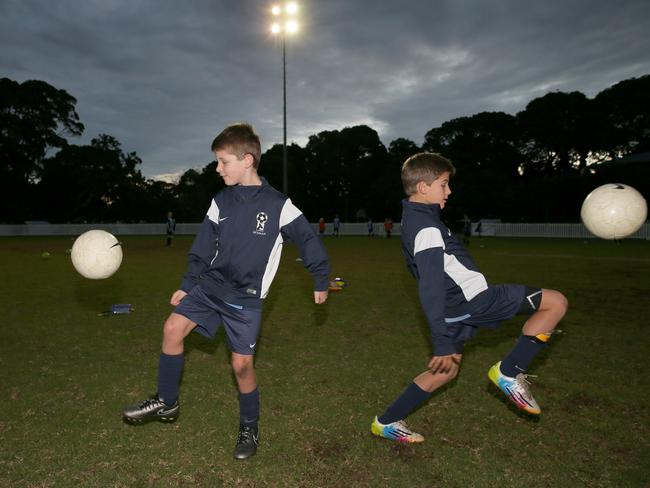Statistics show lower north shore children are the least overweight or obese in Australia
DATA released last week shows where the most overweight and obese children between the ages of two and 17 live. One affluent Sydney area has the lowest number in Australia.

Mosman
Don't miss out on the headlines from Mosman. Followed categories will be added to My News.
IT IS official: the lower north shore has the lowest rates of overweight or obese children in Australia.
An estimated 17.9 per cent of Mosman children or 1070 are overweight or obese, while an estimated 18.7 per cent or 1365 of North Sydney children are overweight or obese.
The municipalities rank first and second, respectively, out of local government areas nationally. Children are defined as being from 2 to 17 years old.
The Australia’s Health Tracker by Area website, developed by Victoria and Torrens universities, released the data last week.
The data is from the Australian Bureau of Statistics’ 2014-15 National Health Survey.
The statistics show that poorer communities and regional or rural communities had poorer health.
Mosman Swans committee member Justin Dethridge said he was not surprised by the lower north shore’s statistics.

“Anecdotally, it is my own experience, both as a parent and through my involvement with the local junior footy club, that families in this area tend to be very active,” he said.
“Anyone attempting to move about by car on the lower north shore on a Saturday or Sunday morning will attest to the sport-related traffic congestion and its impact on travel times.
“Late morning, early afternoon I see the shopping strips heaving with kids in sports gear heading to or from weekend sporting commitments. It’s a very good thing for the community.”

Mr Dethridge said community sports clubs offered children more than the opportunity to stay physically active.
“Physical activity is central to positive health outcomes in children and adults for that matter, but so are the important life skills kids learn through involvement in a sports club,” he said.
“As a community we need to be vigilant about active recreation for our kids and remain mindful of the dangers of sedentary lifestyles in respect to health outcomes.
“An unhealthy lifestyle in childhood is likely to create a pattern of behaviour one takes into adulthood.
“Balance in all things is a sound approach and kids’ sport is an excellent foundation.”

Mosman Football Club coaching director Andrew Taylor said the lower north shore’s figures reflected the area’s many adults and children who led active lifestyles in both organised sport and socially.
“Community sports clubs play an enormous role in keeping kids physically active,” he said.
“We offer year-round programs for participants of all abilities.
“These programs allow a safe, fun and engaging environment for kids to learn new skills, meet new friends and keep fit, and this is fundamental in lowering obesity rates.”
Childhood obesity
Mr Taylor said sport helped children on and off the field.
“We often get parents and kids telling us how much they enjoy coming to football training and games and how it can take some of the pressure off from school, home life and whatever else they are doing in their lives,” he said.
“The number of kids who continue to embrace the coaching and playing opportunities speaks volumes for the benefits of playing sport: from the social benefits of meeting new people, to the physical benefits of keeping active and fit, along with the important role sport has in developing well-rounded people who can embrace a role as a leader, follow instruction and work hard to achieve individual and team goals.”
Like the Mosman Daily on Facebook
Suburbs with high rates of childhood obesity
1. Blacktown: 30,341
2. Parramatta: 28,226
3. Liverpool: 18,396
4. Fairfield: 17,952
5. Bankstown: 16,951
6. Penrith: 14,878
7. Wollongong: 13,353
8. Lake Macquarie: 13,076
Top 11 nationally by LGA (lowest numbers)
1st: Mosman, 17.9 per cent or 1070 kids.
2nd: North Sydney, 18.7 per cent or 1365 kids.
3rd: Adelaide (SA), 18.8 per cent or 227 kids.
4th: Woollahra, 19 per cent or 1651 kids.
Equal 4th: Ku-ring-gai, 19 per cent or 5438 kids.
6th: Burnside (SA), 19.6 per cent or 1559 kids.
7th: Manly, 19.7 per cent or 1636 kids.
Equal 7th: Mosman Park (WA), 19.7 per cent or 325 kids.
Equal 7th: Pittwater, 19.7 per cent or 2626 kids.
Equal 7th: Peppermint Grove (WA), 19.7 per cent or 58 kids.
Equal 7th: Cottesloe (WA), 19.7 per cent or 288 kids.


